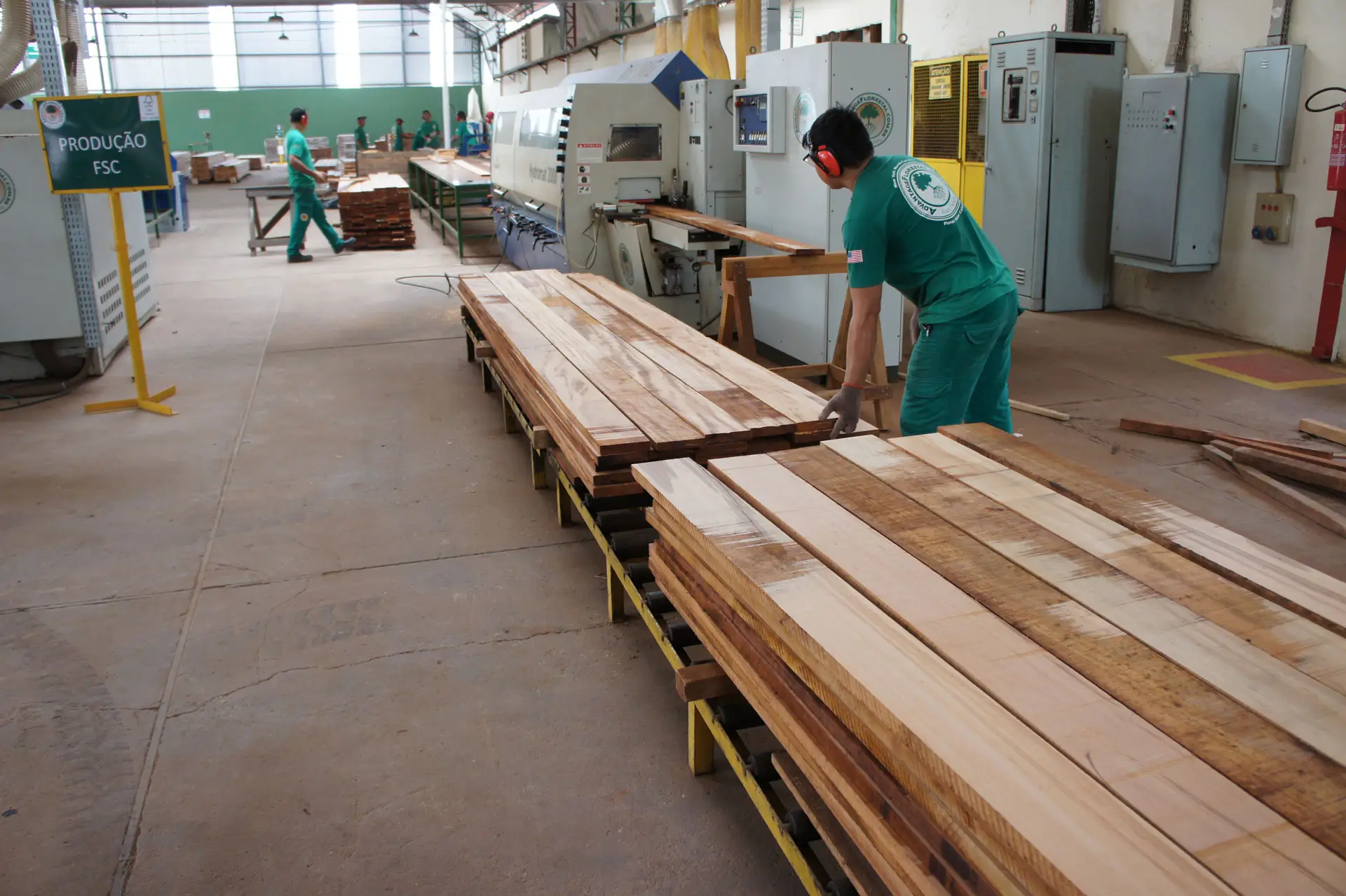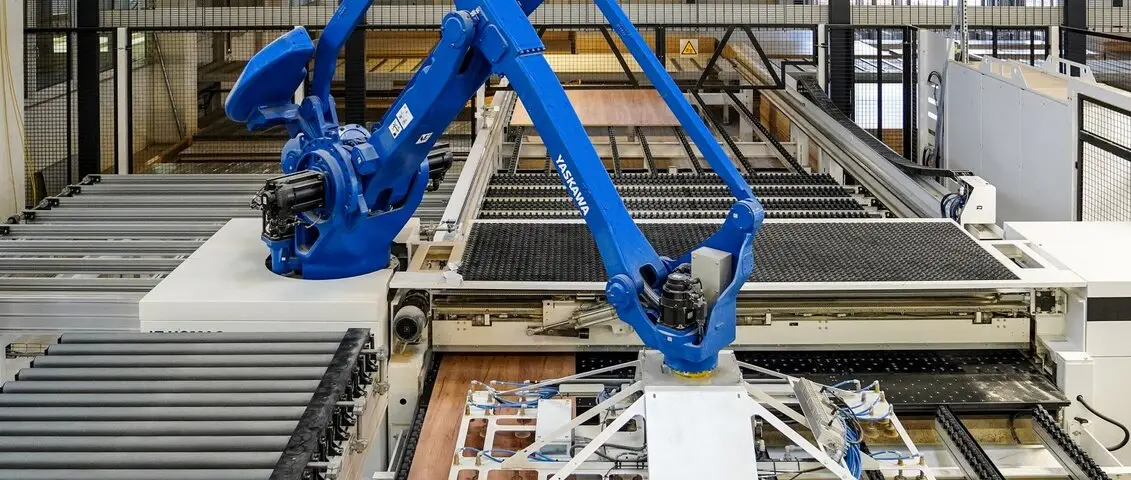Blog
Wholesale Wood Products: Quality Craftsmanship for All Your Needs

In today’s world, the demand for wholesale wood products is on the rise, driven by various industries that seek sustainable and aesthetically pleasing solutions. From construction and furniture-making to decorative arts and crafts, wood continues to play an essential role in our everyday lives. Understanding the nuances of wholesale wood products can help buyers navigate this intricate market with confidence, ensuring they get the best quality at competitive prices.

Introduction to Wholesale Wood Products
The realm of wholesale wood products encompasses a vast array of offerings, each serving unique purposes across different sectors. Whether you’re a contractor looking for lumber, a furniture maker in search of high-quality veneers, or a retailer seeking finished goods for your store, understanding what constitutes wholesale wood products is crucial.
What Are Wholesale Wood Products?
Wholesale wood products refer to timber and wooden items sold in bulk quantities, primarily to companies rather than individual consumers. These products range from raw materials like lumber and engineered wood to finished goods like furniture and flooring. The wholesale aspect implies that these products are often sold at a reduced price per unit when purchased in large quantities, making it an attractive option for businesses aiming to minimize costs while maximizing quality.
This category includes both traditional hardwoods and softwoods, as well as engineered options that offer enhanced durability and versatility. Additionally, the scope of wholesale wood products extends to specialty items such as reclaimed wood, bamboo, and laminated beams, appealing to niche markets focused on sustainability and design innovation.
The Country with the Best Natural Agarwood in the World
Importance of Wood in Various Industries
Wood remains a cornerstone material in numerous industries due to its myriad benefits. In construction, it provides structural integrity and aesthetic appeal, allowing builders to create stunning designs while ensuring safety. The furniture industry relies heavily on wood for crafting everything from basic tables to elaborate custom pieces.
Moreover, wood has seen a resurgence in popularity among environmentally conscious consumers who value sustainable sourcing practices. Woods that are sourced responsibly stand out for their lower carbon footprints compared to synthetic alternatives, solidifying their place as a preferred choice for eco-friendly building and design projects.
Types of Wholesale Wood Products
Understanding the types of wholesale wood products available can help businesses make informed purchasing decisions. Each category serves specific functional and aesthetic purposes, allowing for diverse applications.
Lumber and Timber Products
Lumber is one of the most fundamental wholesale wood products, used extensively in construction and woodworking. It comes in various forms, including dimensional lumber, boards, and timber beams, each suited for different structural needs.
Choosing the right type of lumber requires an understanding of the qualities of various wood species. Softwoods like pine and fir are commonly used for framing and structural applications due to their availability and cost-effectiveness. On the other hand, hardwoods such as oak and maple are often reserved for finishes, cabinetry, and furniture, prized for their durability and rich appearance.
When considering lumber purchases, it’s essential to account for factors such as grain patterns, moisture content, and strength ratings. Selecting high-quality lumber not only enhances the integrity of the final product but also contributes to the overall aesthetics of any project.
Engineered Wood Products
Engineered wood products have gained immense popularity over the years, blending natural materials’ beauty with advanced manufacturing techniques. These products, including plywood, oriented strand board (OSB), and laminated veneer lumber (LVL), offer exceptional strength and stability.
One of the standout features of engineered wood is its ability to minimize waste during production. By utilizing smaller wood fibers and adhesives, manufacturers can create composite materials that maintain structural integrity while offering greater design flexibility. This not only makes engineered wood more sustainable but also opens new avenues for architects and builders to explore unique design possibilities.
Another advantage of engineered wood is its consistent quality. Unlike traditional lumber, which can exhibit variations in density and grain, engineered products undergo rigorous testing and standardization processes, delivering reliable performance that builders and designers can trust.
Plywood and Veneer
Plywood and veneer represent yet another category of wholesale wood products, often used for furniture, cabinetry, and interior finishes. Plywood is made from thin layers of wood veneers glued together, creating a versatile and durable sheet material that can be easily manipulated into various shapes.
Veneer, on the other hand, refers to thin slices of wood that are often applied to surfaces to enhance their visual appeal. This allows manufacturers to use less expensive core materials while still achieving a luxurious finish. The aesthetic qualities of veneer make it particularly desirable in high-end furniture production, allowing artisans to showcase exquisite wood grains without the associated costs of solid hardwood.
With sustainability becoming increasingly important, many producers are now offering eco-friendly plywood and veneer options sourced from responsibly managed forests. This shift aligns with consumer demand for transparent sourcing practices, reinforcing the importance of selecting suppliers who prioritize environmental stewardship.
How to Find Reliable and Reputable Wood Supplier in Vietnam?
Wood Flooring and Decking
Wood flooring and decking are popular choices among homeowners and businesses alike, offering warmth and elegance to both interior and exterior spaces. With various species available, ranging from the classic charm of oak to the exotic allure of teak, customers can select flooring that best suits their aesthetic preferences.
When sourcing wholesale wood flooring, consider factors such as durability, maintenance requirements, and installation methods. Many wood flooring options come pre-finished or engineered for easy installation, catering to a wide range of skill levels among installers.
Decking products also benefit from innovations in wood treatment technologies that extend longevity and resistance to weather-related damage. Treatments such as pressure-treating and thermal modification improve the performance of wood decking, making it a lasting investment for outdoor spaces.
Additionally, many manufacturers are now offering composite decking options that blend recycled wood fibers with plastics, appealing to consumers seeking low-maintenance and sustainable solutions.
Wooden Furniture and Fixtures
Finally, wooden furniture and fixtures represent the culmination of craftsmanship and design, directly reflecting consumer tastes and trends. Wholesale wood furniture ranges from ready-to-assemble pieces to custom creations that showcase artistry and skill.
When sourcing wooden furniture, consider the types of woods used, joinery techniques, and finishing processes. High-quality furniture is often constructed using traditional joinery methods rather than reliance on fasteners, resulting in stronger and more artistic pieces.
Furthermore, trends in furniture design reflect broader movements in the marketplace, including a growing emphasis on multifunctional pieces, minimalism, and sustainable sourcing. Engaging with suppliers who are attuned to current trends can provide a competitive edge for retailers and designers looking to capture consumer interest.

Sourcing Wholesale Wood Products
Finding the right sources for wholesale wood products is key to developing a successful business model. The process involves identifying reliable suppliers and navigating various considerations that impact procurement.
Identifying Reliable Suppliers
Sourcing wholesale wood products starts with identifying reputable suppliers that align with your business values and product requirements. Researching potential vendors involves examining their history, customer reviews, and certifications to ensure they meet industry standards.
Attending trade shows and expos can provide invaluable networking opportunities, allowing you to connect directly with suppliers. Building relationships with trusted vendors often leads to better pricing, priority access to new products, and insights into market trends.
Additionally, leveraging online platforms can expand your reach to international suppliers. However, caution is necessary when dealing with unfamiliar vendors, and conducting thorough due diligence becomes paramount to avoid potentially costly mistakes.
Factors to Consider When Sourcing
When sourcing wholesale wood products, several critical factors should guide your decision-making.
Material quality is foremost; ensure that the wood meets all necessary specifications, including moisture content and strength ratings. It’s also vital to confirm that suppliers adhere to sustainable sourcing practices, especially if your brand emphasizes environmental responsibility.
Pricing is another key consideration, as it directly impacts your profit margins. Request quotes from multiple suppliers and compare not only base prices but also shipping, handling fees, and potential discounts for bulk orders.
Lead times for delivery are equally important, as delays can disrupt production schedules. Establishing clear communication with your chosen suppliers about expected timelines helps set realistic expectations for both parties.
Understanding Wood Certifications
Certifications provide valuable insight into the sustainability and quality of wholesale wood products. Organizations such as the Forest Stewardship Council (FSC) and the Sustainable Forestry Initiative (SFI) set standards for responsible forest management practices.
When sourcing wood products, look for suppliers that possess credible certifications. These endorsements assure customers that the wood has been harvested sustainably and ethically, adding value to your brand and enhancing consumer trust.
Certifications also help differentiate your offerings in a competitive market. As awareness about sustainability grows, consumers increasingly favor products with proven eco-friendly credentials, making certified wood a compelling selling point.
Pricing Strategies for Wholesale Wood Products
Establishing effective pricing strategies for wholesale wood products is paramount to sustaining profitability and competitiveness in the market. Understanding the various factors influencing pricing can empower businesses to negotiate better deals and optimize their margins.
Factors Influencing Pricing
Several variables contribute to the pricing landscape for wholesale wood products, including raw material costs, labor expenses, and transportation fees. Market fluctuations often affect the price of timber, influenced by supply and demand dynamics, economic conditions, and environmental policies.
Seasonality is another factor to consider; demand for certain wood products may peak during specific times of the year, impacting pricing strategies. For instance, demand for decking often surges in the spring and summer months as homeowners prepare for outdoor activities.
Additionally, location plays a significant role in pricing. Suppliers based near timber-rich regions may offer lower rates due to reduced transportation costs, while those further away may incur higher shipping expenses that impact final pricing.
Wholesale Agarwood in Vietnam is the best for Purchasing and import
Negotiation Tips with Suppliers
Effective negotiation skills can lead to favorable terms when sourcing wholesale wood products. Begin by conducting thorough research on market pricing and competitor offerings to understand the landscape before entering negotiations.
Building rapport with suppliers fosters a collaborative atmosphere conducive to negotiation. Approach discussions with transparency and openness, seeking win-win scenarios where both parties benefit.
When negotiating, consider bundling orders or committing to long-term contracts in exchange for lower prices. Highlighting your intent for a sustained partnership may lead suppliers to offer more favorable terms, knowing they secure future business.
Bulk Purchase Discounts
Taking advantage of bulk purchase discounts is a smart strategy for businesses looking to maximize savings. Many suppliers offer tiered pricing structures, providing discounts based on the volume of products ordered.
Establishing minimum order quantities can create opportunities for substantial savings while also streamlining inventory management. Be prepared to forecast demand accurately to avoid overstocking, which could negate the benefits of bulk buying.
Communicating your purchasing plans with suppliers can also open up doors for customized deals tailored to your business needs. A clear understanding of your inventory turnover rates and future projections will facilitate productive negotiations.

Shipping and Logistics
An efficient shipping and logistics strategy is essential in the wholesale wood products industry. Timely and cost-effective transportation ensures smooth operations while minimizing disruptions in the supply chain.
Best Practices for Transporting Wood Products
Transporting wood products demands careful planning and execution to prevent damage and ensure timely delivery. Utilizing reliable shipping partners experienced in handling bulk wood shipments is crucial for mitigating risks associated with transportation.
Choosing the right packaging materials is equally important. Properly securing products with protective wraps, crates, or pallets can prevent contamination and physical damage during transit. Consider weather-resistant materials when transporting products exposed to the elements.
Optimizing routes for transportation can lead to cost savings and improved delivery times. Employing logistics software can assist in route planning by analyzing traffic patterns and identifying the most efficient paths for delivery vehicles.
Managing Import and Export Regulations
For businesses engaged in international trade, understanding import and export regulations is paramount. Each country has specific guidelines governing the movement of wooden products, especially concerning pest control measures and documentation requirements.
Engaging with customs brokers can provide valuable guidance in navigating complex regulatory landscapes. They can help ensure compliance with all necessary documentation, avoiding costly fines and delays.
Additionally, familiarizing yourself with international agreements related to timber trade, such as the Convention on International Trade in Endangered Species (CITES), is crucial for organizations sourcing exotic hardwoods. Compliance with these regulations protects your business while supporting global conservation efforts.
Tracking Inventory and Delivery
Accurate tracking of inventory and deliveries enhances operational efficiency and improves customer satisfaction. Implementing inventory management software can streamline this process, allowing businesses to monitor stock levels, shipments, and reorder points.
Regular communication with shipping partners ensures real-time updates on delivery status, enabling proactive responses to potential delays. Transparency in the supply chain not only builds trust with customers but also facilitates better planning and resource allocation within your organization.
Developing contingency plans for unexpected issues, such as transportation disruptions or inventory shortages, prepares your business to respond swiftly and maintain customer satisfaction.
Quality Control in Wholesale Wood Products
Quality assurance is a critical component of sourcing wholesale wood products. Ensuring that the wood meets industry standards not only safeguards your reputation but also enhances customer satisfaction.
Importance of Quality Assurance
Quality assurance in the wholesale wood industry encompasses the monitoring and evaluation of products throughout the supply chain. Implementing robust quality control measures ensures that only the best materials reach customers, reducing the likelihood of returns and complaints.
From inspecting raw materials at the source to final checks before shipping, consistent quality assessments play a pivotal role in maintaining product integrity. This commitment to quality cultivates customer loyalty and positions your brand as a trusted provider in the marketplace.
Investing in training for employees involved in quality control processes can yield significant benefits. Educating staff on recognizing defects, adhering to safety guidelines, and understanding customer expectations fosters a culture of quality throughout the organization.
Why You Should Choose Acacia Wood Veneer for Your Project?
Common Defects and How to Identify Them
Identifying common defects in wood products is essential for maintaining quality standards. Some prevalent issues include warping, splitting, knots, and discoloration. Each defect affects the wood’s performance and aesthetic appeal, necessitating vigilant inspection.
Visual inspections should focus on assessing wood grain patterns, surface smoothness, and structural integrity. Employing moisture meters can reveal excess moisture content, which may lead to mold growth or warping over time.
Implementing testing methods, such as tensile strength tests and hardness evaluations, can provide objective measurements of wood quality. Documenting findings from these tests supports consistent quality assurance practices and informs future sourcing decisions.
Standards and Testing Methods
Various organizations establish standards for wood quality, including the American National Standards Institute (ANSI) and the International Organization for Standardization (ISO). Familiarizing yourself with these standards helps ensure compliance and guides sourcing practices.
Testing methods vary depending on the type of wood product. For example, engineered wood products may undergo performance tests to assess load-bearing capacity, while hardwoods might require evaluations of surface finish and color consistency.
Working closely with laboratories that specialize in wood product testing can provide valuable insights into product quality and assist in meeting compliance requirements. Investing in third-party testing demonstrates a commitment to quality and can enhance your reputation in the market.

Market Trends for Wholesale Wood Products
Staying attuned to market trends is critical for success in the wholesale wood products sector. Emerging technologies, consumer preferences, and sustainability initiatives shape the industry landscape, presenting opportunities for informed decision-making.
Current Demand and Supply Dynamics
The demand for wood products fluctuates based on economic conditions, construction activity, and consumer preferences. Currently, there is a notable increase in demand for sustainable and reclaimed wood products, driven by a growing emphasis on eco-friendly building practices.
Supply dynamics are similarly affected by factors such as natural disasters, trade tariffs, and changing land-use policies. As countries grapple with deforestation and environmental challenges, sourcing practices must adapt to ensure sustainable harvesting and responsible trade.
Keeping abreast of these dynamics is crucial for businesses to successfully navigate fluctuations in supply and demand. Analyzing market reports, engaging with industry experts, and participating in trade networks equip businesses with the knowledge needed to anticipate shifts in the market.
Emerging Technologies in Wood Production
Innovations in technology are revolutionizing the wood production industry, leading to enhanced efficiency and sustainability. Advancements in automated cutting and milling processes enable manufacturers to produce high-quality products while minimizing waste.
3D printing with wood-based materials is also gaining traction, allowing for rapid prototyping and customization of wood products. This technology empowers designers to experiment with intricate designs and create bespoke items tailored to individual customer preferences.
Moreover, digital platforms facilitating virtual showrooms and e-commerce transactions enhance accessibility for both suppliers and buyers. Embracing these technologies positions businesses to remain competitive in an increasingly digital marketplace.
Sustainability Trends Affecting the Industry
Sustainability is no longer just a trend; it has become a guiding principle for the wood products industry. Consumers are actively seeking out brands that prioritize responsible sourcing and transparency in their supply chains.
This shift towards sustainability has encouraged suppliers to adopt eco-friendly practices, such as using reclaimed wood and implementing reforestation initiatives. Collaborating with organizations committed to sustainable forestry enhances credibility and resonates with environmentally conscious consumers.
As regulations surrounding environmental stewardship continue to evolve, staying ahead of sustainability trends not only aligns with consumer preferences but also mitigates potential risks associated with non-compliance. Incorporating sustainability into your business model can differentiate your offerings in a crowded market.
Future of Acacia Hardwood in Home Design in 2024
Notes
To thrive in the wholesale wood products arena, understanding key takeaways and anticipating future developments is essential.
Key Takeaways for Buyers
Buyers should prioritize establishing relationships with reliable suppliers who adhere to quality standards and sustainable practices. Conducting thorough research and verification processes ensures that you receive high-quality products that align with your values.
When negotiating prices, leverage market insights and build rapport with suppliers to secure favorable terms. Monitoring industry trends, consumer preferences, and emerging technologies will inform purchasing decisions that resonate with your target audience.
Additionally, embracing sustainability as a core component of your sourcing strategy will not only attract eco-conscious customers but also position your brand as a leader in responsible business practices.
Future Outlook of the Wholesale Wood Market
The future outlook for the wholesale wood market appears promising, driven by increasing demand for sustainable materials and innovative applications of wood products. As construction and renovation projects surge, the need for reliable sources of quality wood will remain strong.
Technological advancements will continue to reshape the industry, introducing more efficient production methods and expanding possibilities for customization. Regulatory frameworks surrounding environmental protection will likely tighten, underscoring the importance of sustainable sourcing practices.
By staying agile and responsive to these trends, businesses can capitalize on evolving market conditions while contributing positively to the industry’s long-term viability.

Mistakes to Avoid
While navigating the wholesale wood products market offers numerous opportunities, several pitfalls can hinder success.
Underestimating Shipping Costs
Shipping costs can significantly impact the overall expense of sourcing wood products. Businesses should conduct thorough analyses of transportation fees and factor them into budgeting calculations. Failing to account for these costs can erode profit margins and lead to financial shortfalls.
Ignoring Supplier Reputation
Selecting suppliers based solely on price can be a costly mistake. Researching supplier reputations, customer reviews, and certifications is vital to ensuring quality and reliability. A poor choice in supplier can result in subpar products and strained business relationships.
Failing to Verify Product Quality
Neglecting to verify the quality of wood products before making purchases can lead to issues in customer satisfaction and increased returns. Implementing strict quality control processes and conducting inspections is crucial in safeguarding your investment and brand reputation.
Miscalculating Storage Needs
Inadequate planning for storage space can create logistical challenges and disrupt operations. Carefully assessing inventory levels and storage capacities ensures that businesses can efficiently manage stock and avoid unnecessary complications.
Frequently Asked Questions
What is the difference between wholesale and retail wood products?
Wholesale wood products are sold in bulk quantities to businesses, typically at discounted rates. Retail wood products are sold to individual consumers in smaller quantities and usually come at higher prices.
How can I ensure sustainable sourcing of wood products?
To ensure sustainable sourcing, work with suppliers who have credible certifications, such as FSC or SFI. Research their sourcing practices and prioritize partnerships with those committed to responsible forest management.
What are the most popular types of wood among buyers?
Commonly sought-after wood types include oak, maple, cherry, and walnut for furniture and cabinetry. Pine and cedar are favored for construction and outdoor projects due to their durability and resistance to decay.
How do I establish a long-term relationship with suppliers?
Building long-term relationships requires clear communication, transparency, and mutual respect. Foster collaboration by providing feedback, discussing future needs, and demonstrating loyalty through consistent ordering practices.
Conclusion about Wholesale Wood Products
Navigating the world of wholesale wood products can be a rewarding endeavor for businesses committed to quality, sustainability, and innovation. From understanding the various types of products available to effectively sourcing and managing logistics, mastering these elements is essential to thriving in the industry.
By prioritizing quality assurance, staying informed about market trends, and cultivating strong relationships with suppliers, businesses can position themselves for success in a dynamic and ever-evolving marketplace. Ultimately, embracing the principles of sustainability and responsible sourcing will not only benefit individual enterprises but also contribute positively to the wood products industry as a whole.

 Decor
Decor Indoor Fountains
Indoor Fountains Accessories
Accessories Agarwood
Agarwood Wooden
Wooden Acacia Wood
Acacia Wood Charcoal
Charcoal Coconut Charcoal
Coconut Charcoal Hardwood Charcoal
Hardwood Charcoal Softwood Charcoal
Softwood Charcoal White Charcoal
White Charcoal